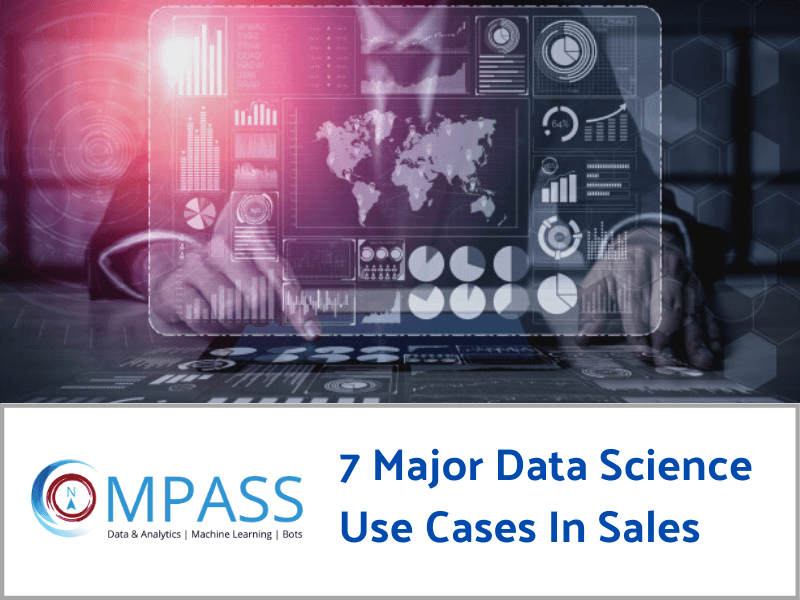Businesses and economies across the world have already faced a massive disruption due to COVID-19 and are preparing for the new normal. As the virus still continues to spread and with social distancing becoming mandatory in many major economies – it’s safe to say that the unique challenges posed by the pandemic are far from over.
Now is the time for companies to rethink their crisis response strategies and how they can ensure business continuity. This is especially true for industries with sophisticated supply chains like retail and manufacturing.
Supply chain leaders across the globe are trying to find answers for these pressing questions:
- How is demand getting impacted by the crisis?
- What are the factors that are influencing demand?
- How to ensure restoration of stocks that are reliable?
- Can we try local sourcing?
- How to optimize pricing?
- What are the reasons for out of stock?
- How much inventory should be stocked and where?
- How can we expand supplier networks?
Traditional Supply Chains Are Paying A Huge Price
In the last few months, we have seen how costly supply chain disruptions could be. P&G estimated that 17,600 of its product items could be affected due to COVID-19 led supply chain disruptions in China.
Especially companies which didn’t adopt digital transformation and followed traditional supply chain management tenets like low-cost supply and minimal inventory levels are facing huge risks. Losing out to competition, reduction in global output, drop in revenue, sales and market share are some major consequences these companies face.
On the other hand, companies with a flexible and resilient supply chain are seamlessly expanding production output and gaining a serious competitive advantage. While major companies saw layoff-inducing downturns in the first quarter of 2020, Nestlé’s sales grew by 4.3%.
We have been able to deliver what consumers needed thanks to the resilience of our supply chain…
says Vineet Khanna, a Senior Vice President and Global Head of Supply Chain at Nestlé.
While many senior supply chain executives might assume they can switch back to the old ways of working once the pandemic passes, it actually increases risks. The fundamentals of supply chain management have changed – flexibility and resilience are the key tenets during and post the COVID-19 era.
Changing Consumer Behaviors Are Posing Significant Challenges For Supply Chain Leaders

As depicted in the image above, Nielsen defined thresholds of consumer behavior shifts across six stages. Most major economies (U.S, UK and Europe) already experienced the first four stages. Many countries are going through a Hammer and Dance Approach where they might swing back and forth between these stages based on the increase in COVID cases. Some who have been successful in containing it have been living the New Normal.
Across these stages, there have been significant shifts in consumer shopping behavior driven by various factors and events.
- Shifts in purchase channels: Decline in the frequency of store visits and surge in grocery e-commerce due to quarantined living.
- Product switching: Consumers are looking for cheaper options and also buying new brands due to lack of availability of products from desired brands.
- Changing category preferences: There is a rising interest for essential product categories like health and wellness, pet food, toilet papers etc.
These continuous unprecedented shifts in consumer behaviors are overwhelming supply chain leaders who are already struggling to forecast demand and ensure shelves are stocked. Supply chain strategies in the new normal are dependent on predicting these shifts along with forecasts on virus containment and economic recovery.
Pantry loading: The COVID-19 disruption has fueled consumer pantry loading on steroids. In an effort to reduce the visits to retail or supermarket stores or in the fear of potential lockdowns, consumers are stocking up different items at unpredictable times. This has created a challenge for retailers to accurately predict demand and has led to over stocking or under stocking of some items resulting in lost sales, high inventory and loss of profits for some.
This further accelerates the need for a resilient and flexible supply chain driven by advanced analytics and modern digital technologies.
Building A Resilient Supply Chain
Supply chain leaders should invest in the following capabilities to build a flexible, responsive and resilient supply chain.
1) Advanced Analytics
Rapid generation of insights is the backbone of a resilient supply chain. Supply chain leaders can tackle disruptions by leveraging advanced analytics to rapidly analyze internal data and external sources of big data. Using AI and machine learning, advanced analytics provide predictive and prescriptive recommendations and forecasts. Let’s take a closer look at the key areas where this technology adds value amid the pandemic.
Learn More: Advanced Analytics For Retail, CPG, Food & Beverages | Compass
Demand Forecasting
As customer-demand patterns have changed significantly, previous demand forecasts are no longer useful. Product categories are experiencing demand fluctuations in various ways. Demand-forecasting analysts have little to no understanding of the factors that’ll shape demand in the immediate and near future.
To fully understand how demand will shape during and after the pandemic, organizations should start leveraging advanced analytics with multiple data sources including:
- Point of sales
- Social listening
- Online search
- Local pandemic variables: Local government regulations, new cases and death toll
- Competitor data
Since the pandemic is affecting different regions in different ways, the need for localized and real-time data has never been more important. In the months to come, companies will have to completely transform their forecasting approach – either because of the permanent shift in consumer behavior or obsoleteness of their historical data.
Learn More: Demand Forecasting Systems For CPG
Improving Stock Visibility
Organizations need end-to-end visibility into the stock availability in their warehouses and stores. They also need to know which products are selling, when and where so they can react quickly to the changing needs. Having a unified database which provides demand visibility across channels and analyzing this data is essential. This reduces inventory overspend by enabling supply chain teams to make agile replenishments.
Reducing Out of Stock Situations
Reducing out of stock situations is the single biggest goal of any supply chain leader during these uncertain times. We at Acuvate are helping Fortune 500 CPG customers build an AI-powered Out of Stock Dashboard that focuses on your most profitable SKU’s in terms of Total Dollar Value Impact. The dashboard helps:
- Identify the reason for out of stock situations and fix issues – these could be related to the supply chain, order systems etc.
- Identify on which specific days the item goes out of stock and
- Spot any specific out of stock trends and plan logistics around it
The report gives the specific days when the out of stock occurs and the reasons behind it. In addition, we are also helping clients deploy a supply chain bot that helps stakeholders to understand and analyze the reasons for out of stock situation helping improve their Perfect Order Rate and service levels The frontline personnel are also equipped with a Digital Assistant that answers questions related to Must Stock List, Out Of Stock related information and provides information access at finger tips leading to faster and better decisions improving the execution effectiveness.
Learn More: The 2 Major Causes Of Out-Of-Stock Situations & How To Prevent Them
Supplier Risk Analysis
In the restricted living phase, retailers need to closely look into government regulations and how they’re affecting the functioning of different types of manufacturing facilities. Many small businesses are facing a cash crunch due to lack of demand. If small suppliers go out of business, the retail supply chain will be disrupted further. UK-based supermarket chain Morrisons paid its small suppliers immediately to help keep them afloat amid coronavirus uncertainty. Continuous analysis and monitoring of suppliers’ financial state will become more critical in the new normal phase.
2) Crisis management teams
The volatility in current supply chain operations requires organisations to set up a crisis management team that can take quick and agile supply chain decisions.
This team should focus on critical tasks like:
- Rapid reorganization: Updating supply plans and demand forecasts. Ensuring the limited supply is reallocated to critical customers and regions.
- Engaging suppliers: Production capacity and material delivery rates of suppliers need to continuously monitored and issues should be resolved proactively.
- Supply chain mapping: Companies which invested in supply chain mapping before the pandemic are better prepared than the ones that didn’t. They are taking advantage of a better supply network and having information at their fingertips as soon as there is a potential disruption. They know which suppliers, sites, parts, and products are at risk and thereby quickly secure constrained inventory at alternate sites.
- Companies that invested in mapping their supply networks before the pandemic emerged better prepared. They have better visibility into the structure of their supply chains. Instead of scrambling at the last minute, they have a lot of information at their fingertips within minutes of a potential disruption. They know exactly which suppliers, sites, parts, and products are at risk, which allows them to put themselves first in line to secure constrained inventory and capacity at alternate sites.
- Analysis and reporting: Analysts should report on canceled orders, production plan deviations, fulfillment rates, supplier performances and other relevant KPIs to detect any potential issues. The crisis management teams should also perform root-cause analysis and help prioritize issues for supply chain leaders.
3) Cyber Security
As organizations are becoming more technology dependent to tackle the crisis, the chances of cyberattacks continue to increase. In addition, the very nature of threats is changing, as hackers exploit unprecedented situations and the rapid changes in IT and organization.
This team should focus on critical tasks like:
- Ensure the new remote working systems are fully patched and secured
- Enable on-premise security controls to systems when they are on external network
- Modernize your incident response strategies and playbooks to ensure they’re inline with a remote working environment
- Try to reduce manual efforts and improve the usage of technology to perform key security tasks
- Educate employees on potential threats and caution them to be extra vigilant
- Monitor the issues raised by remote workers
4) Digital Collaboration
Amid the pandemic, manufacturers are demanding more visibility into suppliers’ operations. Leverage cloud-based collaborative platforms and supply chain apps to improve communication and information sharing. These tools also enable a secure environment for suppliers and external partners and improve the speed of decision making. Many organizations are making their supply chains more autonomous by utilizing automation.
If you’re a Microsoft customer, you can consider building B2B extranet portals on Office 365 to facilitate manufacturer-partner collaboration. Acuvate is also helping customers supercharge their digital workplace strategies with Mesh 3.0 – The World’s First Autonomous Intranet.
Important actions you can take:
- Update your risk assessment strategies to consider new risks and enforce compliance focus on them
- Document business justification to prevent any delays once the crisis averts
- Use technology and allocate more human resources to accelerate rapid onboarding of third party suppliers while ensuring compliance
5) Employee Safety
Employee safety is a top priority to ensure a resilient supply chain. Companies can look into optimizing their production and distribution capacity to ensure employee safety. This can be done by supplying personal protective equipment (PPE) and having communication teams to provide infection-risk levels information and remote working options. Information related to the safety of the employees on the field has been a huge concern. Acuvate has been helping companies roll out essential safety apps needed for Crisis Management to communicate to the supply chain teams on the field and capture key information.
Important actions you can take:
- Implement a Crisis Management App accessible on mobile devices to convey key information and alerts.
- The crisis management app should have a daily health assessment form which captures health related information of employees and location.
- Safety Dashboards which give details about the risks of the field force and locations. These dashboards need to be accessible to the HR and leadership team to ensure better decision making and improving employee safety.
6) Real-time end-to-end supply chain visibility
In a recent EY survey, supply chain executives said end-to-end visibility is the number one factor in creating a successful supply chain. Yet, only 6% of respondents are very confident in their systems and capabilities for end-to-end supply chain visibility. Real-time visibility drives better decisions on risk management and performance improvement. A supply chain Control Tower or a Digital Twin powered by AI and machine learning can be leveraged to detect possible disruptions and optimize existing resources.
Get Started
COVID-19 pandemic has exposed many critical vulnerabilities in the supply chain. It showed the lack of flexibility and unresponsive nature of most supply chains. Companies need to look into how they can adopt supply chain management technologies to be better prepared for changing customer behaviours, economic instabilities and other emerging challenges in the new normal.
Companies that start investing in a resilient supply chain today will be able to tackle future issues head-on and ensure a seamless delivery of goods. Advanced analytics will be the cornerstone of the journey towards building a responsive and resilient supply chain.
As a Microsoft Gold Partner, Acuvate is helping several Fortune 500 manufacturers and retailers gain rich data insights that accelerate digital transformation with Microsoft Analytics and AI solutions. If you’re interested to learn more about this topic, please feel free to get in touch with one of our supply chain and digital transformation experts for a personalized consultation. You may also explore our data and analytics services and digital collaboration solutions for insights.



